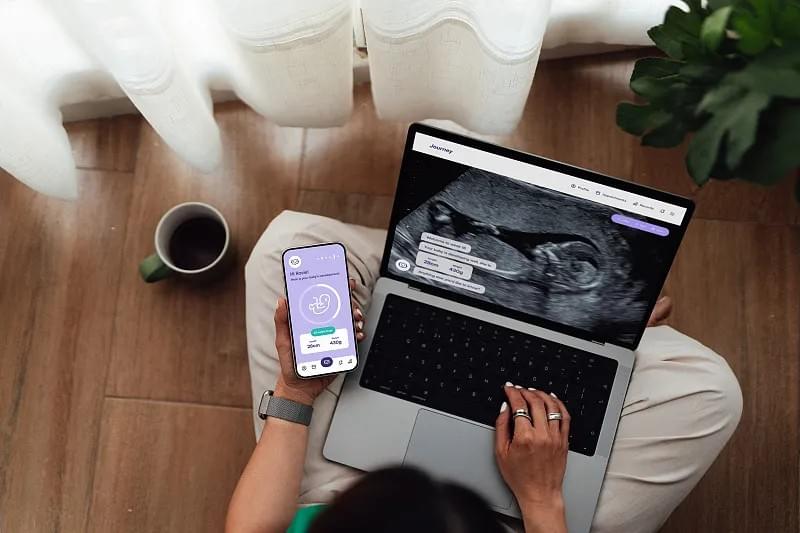In recent years, the journey to parenthood has been dramatically reshaped by advancements in medical science and digital innovation. Among the most profound transformations is the integration of smart technologies into the field of surrogacy. Once considered a complex, often opaque process, surrogacy is now becoming more accessible, transparent, and efficient—thanks to the power of artificial intelligence (AI), blockchain, telemedicine, and wearable health devices. For intended parents, surrogates, and fertility clinics alike, these technological advancements are not just conveniences; they are revolutionizing the very foundation of assisted reproductive technology (ART).
This article explores how smart technologies are redefining surrogacy practices, improving outcomes, and enhancing the overall experience for all parties involved. As global interest in surrogacy continues to grow—especially in regions with supportive legal frameworks—understanding the role of technology is essential for anyone navigating this path.
1. Telemedicine: Bridging Geographical and Emotional Gaps
One of the most significant challenges in traditional surrogacy arrangements has been the logistical complexity of coordinating between intended parents, surrogates, and medical professionals—especially when they are located in different countries or time zones. Enter telemedicine, which has emerged as a cornerstone of modern surrogacy support.
Through secure video consultations, intended parents can now participate in critical prenatal appointments, ultrasounds, and even counseling sessions in real time, regardless of their physical location. This level of involvement fosters emotional connection and trust, which are vital for a successful surrogacy journey. Moreover, telemedicine platforms equipped with multilingual support and encrypted communication ensure privacy and inclusivity for international clients.
For surrogates, regular virtual check-ins with fertility specialists and mental health counselors reduce the stress associated with frequent in-person visits. This is particularly beneficial during the later stages of pregnancy when mobility may be limited. Studies have shown that consistent telehealth support leads to higher satisfaction rates among surrogates and improved psychological well-being.

2. AI-Powered Matching Systems: Precision in Partnership
Finding the right surrogate is one of the most critical—and often most daunting—steps in the surrogacy process. Historically, matching relied heavily on manual screening and subjective assessments, which could lead to mismatches or prolonged waiting times. Today, AI-driven matching platforms are transforming this phase with data-driven precision.
These systems analyze vast datasets, including medical history, lifestyle preferences, psychological profiles, and personal values, to identify the most compatible surrogate-intended parent pairings. Machine learning algorithms continuously refine their recommendations based on successful outcomes, ensuring higher alignment and reduced risk of conflict during the journey.
For example, an AI platform might prioritize a surrogate with a history of smooth pregnancies and strong communication skills for a first-time intended parent seeking high involvement. Alternatively, it might match a surrogate who values privacy with parents who prefer a more hands-off approach. This level of customization enhances mutual understanding and reduces the likelihood of misunderstandings down the line.
Additionally, AI tools assist clinics in predicting embryo implantation success rates by analyzing genetic data and uterine health metrics, further increasing the chances of a healthy pregnancy.

3. Wearable Health Monitors: Real-Time Pregnancy Insights
Pregnancy monitoring has entered a new era with the advent of smart wearable devices designed specifically for maternal health. These tools—ranging from advanced fitness trackers to FDA-cleared biosensors—enable continuous, non-invasive tracking of vital signs such as heart rate, blood pressure, glucose levels, and fetal movement.
In the context of surrogacy, real-time health data is invaluable. Intended parents gain peace of mind knowing they can access verified updates about the surrogate’s well-being and the baby’s development. Meanwhile, medical teams can detect early warning signs of complications like preeclampsia or gestational diabetes, allowing for timely interventions.
Some clinics now integrate wearable data directly into electronic health records (EHRs), creating a seamless flow of information between surrogates, doctors, and intended parents. This integration not only improves clinical outcomes but also strengthens transparency and trust throughout the process.
Moreover, wearable tech supports personalized care plans. For instance, if a device detects elevated stress levels in a surrogate, the system can automatically trigger a wellness check-in from a counselor or suggest mindfulness exercises via a connected app.

4. Blockchain for Security and Transparency
Trust is the cornerstone of any surrogacy arrangement, and nowhere is this more critical than in legal and financial matters. Blockchain technology is emerging as a powerful tool to ensure data integrity, contract enforcement, and payment security in surrogacy programs.
Smart contracts—self-executing agreements coded on a blockchain—can automate payments to surrogates upon the completion of specific milestones (e.g., embryo transfer, ultrasound confirmation, delivery). This eliminates delays, reduces disputes, and ensures financial fairness. Because blockchain records are immutable and transparent, all parties can verify transactions without relying on intermediaries.
Beyond finance, blockchain can securely store medical records, consent forms, and legal agreements. Each document is encrypted and timestamped, making it tamper-proof and easily accessible to authorized individuals. This is especially important in cross-border surrogacy cases, where differing national regulations can complicate documentation.
By decentralizing sensitive data, blockchain minimizes the risk of data breaches and unauthorized access—addressing one of the biggest concerns in digital healthcare today.
5. The Ethical and Regulatory Landscape
While the benefits of smart technologies in surrogacy are undeniable, they also raise important ethical and regulatory questions. Issues such as data privacy, algorithmic bias in AI matching, and equitable access to high-tech surrogacy services must be carefully addressed.
For instance, who owns the data collected from wearable devices? How can we ensure that AI systems do not inadvertently favor certain demographics over others? And how can we prevent technology from widening the gap between those who can afford premium surrogacy services and those who cannot?
Regulatory bodies and fertility organizations are beginning to develop guidelines for the ethical use of technology in ART. Transparency, informed consent, and patient autonomy must remain central to any technological implementation.
6. The Future of Tech-Enhanced Surrogacy
Looking ahead, the convergence of smart technologies promises even more groundbreaking developments. Virtual reality (VR) could allow intended parents to "experience" ultrasounds in 3D, while advanced genomics and AI may one day predict long-term child health outcomes with greater accuracy.
Moreover, as global surrogacy networks expand, cloud-based platforms will enable seamless collaboration between international clinics, legal experts, and support teams—making surrogacy a truly borderless journey.
For fertility clinics and surrogacy agencies, investing in these technologies is no longer optional—it’s a necessity to remain competitive and deliver superior care. For intended parents, embracing tech-enhanced surrogacy means greater involvement, reduced uncertainty, and a smoother path to welcoming their child.

Conclusion: A New Era of Empowered Parenthood
The fusion of smart technologies with surrogacy is not merely a trend—it’s a paradigm shift. From AI-driven matching to blockchain-secured contracts, these innovations are making surrogacy safer, more efficient, and profoundly more human. They empower intended parents with information, support surrogates with better care, and enable medical professionals to deliver precision medicine at scale.
As we move forward, the challenge will be to ensure that these technologies are used ethically, inclusively, and with the well-being of all parties at the forefront. For those considering surrogacy, the message is clear: the future of family-building is here—and it’s smarter than ever.
